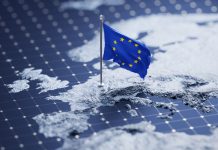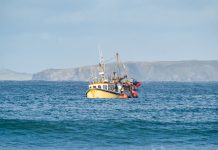The EU’s blue economy has struggled since its setbacks during the COVID-19 pandemic, but is now thriving, according to the newly released 2025 Blue Economy Report
Driven by innovation and sustainability, the sector is experiencing strong growth, creating jobs and boosting economic output across a wide range of maritime industries.
Blue economy bounces back after Covid-19
The blue economy refers to all economic activities connected to oceans, seas, and coasts, including fisheries, coastal tourism, renewable energy, and maritime transport.
This year’s report highlights how investments in innovation, especially in renewable marine energy, are helping the EU blue economy become more competitive, resilient, and environmentally sustainable.
One of the strongest signals of recovery and expansion is the sector’s employment and output growth. In 2022, the blue economy employed 4.82 million people, a 16% increase from the previous year.
Its turnover surged to nearly EUR 890 billion, up 29%, while Gross Value Added (GVA), a key measure of economic productivity, rose by 33% to EUR 250.7 billion.
EU’s blue economy: Offshore wind energy leads in innovation surge
Among the standout performers is the marine renewable energy sector, particularly offshore wind energy. With a total capacity of 18.9 gigawatts now deployed across 11 EU countries, this sector can power more than 6 million households.
From a few pilot projects two decades ago, it has become one of the fastest-growing components of the EU economy. In 2022 alone, the EU attracted EUR 48.53 billion in investment for ocean energy, more than half of global investment in the sector. That same year, the sector’s GVA jumped to EUR 5.3 billion, and profits soared to EUR 4.1 billion, marking a 56% increase over 2021.
Coastal tourism power employment and recovery
Coastal tourism remains a cornerstone of the EU’s blue economy. In 2022, it accounted for 33% of the sector’s GVA and employed 54% of its workforce. The tourism industry fully rebounded that year from the severe impacts of the pandemic, which saw a dramatic decline in activity in 2020.
Other sectors have also shown impressive growth between 2013 and 2022. Offshore wind energy led with a staggering 1049% increase, followed by maritime transport at 99%, shipbuilding and repair at 73%, marine living resources at 44%, and port activities at 36%.
Sustainability at the centre of maritime progress
Sustainability has been a main theme in the EU’s blue economy strategy, aligning closely with the goals of the European Green Deal. Efforts to reduce emissions and increase efficiency are evident across several sectors.
For example, sea and coastal freight transport cut emissions per tonne of freight by 10% from 2013 to 2022. The EU fishing fleet also achieved a 31% reduction in CO2 emissions and a 17% decrease in fuel consumption compared to 2009.
These gains benefit the environment and strengthen the blue economy’s ability to withstand future climate-related challenges. As innovation continues to drive progress, the outlook for the EU’s maritime industries remains positive.
Preliminary estimates suggest that this momentum carried into 2023, with the blue economy contributing EUR 263 billion to the EU’s GVA and employing nearly 4.9 million people.











